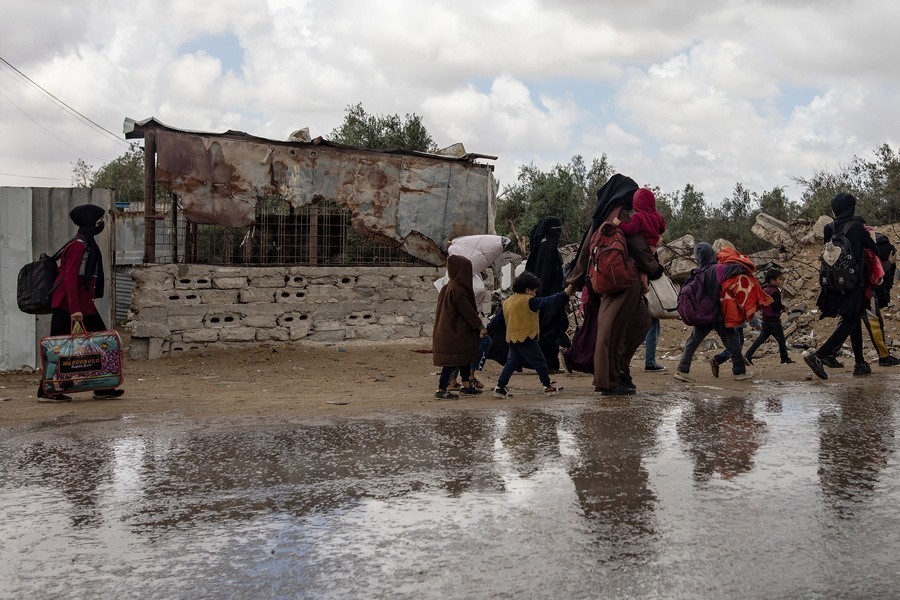
European Union and the “rich West”: Poverty and Social Exclusion is a threat for its Young NEETs
By George Koulouris
Poverty was earlier a key (but not exclusive) issue for the international community, largely developing countries (see here) but since then the 2008 crisis has drastically affected the standard of living in the EU and raised poverty’s profile in the “rich” West.
The austerity measures and the downturn in economic activity during the Great Recession have greatly exacerbated the situation, raising poverty and social exclusion to the top of the political agenda. The risk of poverty affected 78m citizens before the crisis, while in 2017 this figure is 118.7m, or a quarter of EU citizens, while unemployment, while now declining, was 7% pre-crisis and remains at 9%. Greece has the highest unemployment rate in the EU with 21.7%, while its young people aged 15–24 are 44% jobless (18.7% in the EU). Spain with 17% unemployment and 36% young people jobless is the second most-affected country.
In contrast to extreme poverty in the developing South, relative poverty within a society with a high standard of living is examined in the EU via the AROPE (At Risk of Poverty or Social Exclusion). Countries dealing with the biggest problems are in the southern periphery, the Baltics and the Balkans, with young people facing the worst consequences.
Equally important is the concept of social exclusion, introduced by the EU in the mid-1980s by Jacques Delors, and analyzing the relationship between the individual and the rest of society. Social exclusion is a wider concept than poverty and directly related to employment.
What is the situation so far?
22.4% of the population in the EU-28 is in a state of poverty, with most of these in rural or remote areas. Fourteen countries are in a worse position than they were pre-crisis in 2008, with Greece ranked third: 36% of the population is plagued by the risk of poverty compared with 28.1% previously. The countries of northern Europe are in a better position — below the EU average, thus widening the North-South gap. The AROPE indicator takes into account three dimensions: income, labor intensity and material deprivation, giving an overall assessment of poverty in the EU.
The income dimension sets a minimum threshold of 60% of the national median equivalent, minus social transfers, as defining poverty. In the total EU population 17.3% are below this threshold. The highest indicators of income poverty are recorded in southern Europe, with Greece accounting for 21.3% of its population below the European average, while a total of 86.7m citizens fall below it.
The second dimension is material deprivation that examines nine variables such as the inability to pay bills on time, keep the home warm, face unexpected expenses, eat fish, meat, vegetables every second day, have one’s week holiday away from home, own a car, a washing machine, a color TV, a phone including mobile phone. In a disadvantaged position are those within at least three of these categories or 9% of the EU population (about 40.3m), meaning that they have reduced living standards owing to a lack of financial resources. Greece is well above the average with 21.5%, while France, Austria and Sweden record the lowest rates.
The third dimension of AROPE relates to the employment intensity of potential workers in the EU and those households whose members work less than 20% of (average) annual time. Ages that are particularly relevant to this dimension are 18 to 64 years old, with the proportion of the population affected up from 8% in 2008 to 11% in 2015; Greece and Spain are both over 16%.
Two new terms: Working Poor and NEETs
The economic downturn in the EU has seen the stronger emergence of the phenomenon of the “working poor”. These are workers who earn less than 60% of their median national income and work in precarious conditions. In 2008, the working poor were 8%, while in 2017 they are 10% of the workforce.
Having a low salary is one of the main causes of poverty. The risk of poverty is greater for a household if one person is working at home, as there will be fewer earnings. If somebody is the second employee in a home and has a supplementary income then the risk of poverty for the household is, of course, reduced.
Education plays a fundamental role in poverty, as the lower one’s educational level the lower the chances of finding work and the higher the chances of working poverty. Also, the type of employment can be decisive, as 5% of full-time employees are working poor, while in part-time work this percentage is 15%.
NEETs: Young people, who are the future of every society, when they face problems both economically and socially, are likely to remain at this level having a bleak future, so special care is needed.
In the EU, 7m of young people are not in employment, education and training. In 2015, 12% of young people were NEETs, with the highest rate reached in 2013 at 13%. Before the financial crisis began in 2008, the percentage was 10%. Northern countries have a lower NEET population but the southern ones face the biggest problem: in Italy and Greece the percentage of NEETs exceeds 23%.
48% of them have reached up to a certain level in upper secondary education and 43% to one a certain point in lower secondary education (see here). Also, after the economic crisis, participation of higher education graduates in this group became more widespread. The European average is 12%, while in Greece it accounts for 43% of those who have completed tertiary education.
What should Europe do?
As Mahatma Gandhi stated, “poverty is the highest form of violence”. High unemployment rates and poor working conditions aggravate the situation in the EU as a large part of the population cannot meet a minimum standard of living. This results in their gradual exclusion from other activities as a repercussion of their difficult financial position.
The threat of social exclusion for the young is increasing, with alarming effects. it should be noted that 28% do not care about the political situation compared to 40% of non-NEETs, and they have little confidence in the institutions. Each new generation represents the future for society so they require efficient, effective and tailored solutions.
In this context, the EU has set the target of reducing the number of poor people by 20m by 2020, while placing a particular emphasis on employment, education and training. Both the European Social Fund and the European Strategic Investment Fund seek to create new jobs and reintegrate young people into either education or training programs. Especially for young people, there is the Youth Guarantee Program which focuses on apprenticeship, work experience for young people in order to enhance job search in future and helping to cut the rate of joblessness from 23.7% in 2013 to 18,7 in 2016. Nevertheless, the target of reducing the number of poor people by 2020 is difficult to reach given that from 116m people at risk of poverty the target was to reach 96m in 2020 and in 2014 this number was as high as 122m. according to Eurostat.
Conclusion
Poverty plagues large parts of the EU’s population since 2008. Europe Strategy 2020 sets ambitious goals but the target for reducing the number of the poor is impossible despite the current strong recovery. An effective solution is still required for the unemployed, NEETs and working poor. Increasing employment opportunities alone will not solve the problem; strong focus must be put on quality education, training and jobs and a strong social protection system for poverty and exclusion to be eradicated.
* George Koulouris- Political Scientist based in Athens, working as Consultant/Communication Assistant at a management & consulting firm. His interests focus on social inclusion, education, employment, minority and human rights. He holds a degree in International & European studies from University of Piraeus and a Master of Arts on Sustainable Development
- Τα σχόλια που δημοσιεύονται στην ιστοσελίδα μας εκφράζουν απαραίτητα τους συγγραφείς. Η ιστοσελίδα μας δεν λογοκρίνει τις γνώμες των συνεργατών της.
Water Scarcity in Middle East and North Africa: A cause for instability and the major consequences

